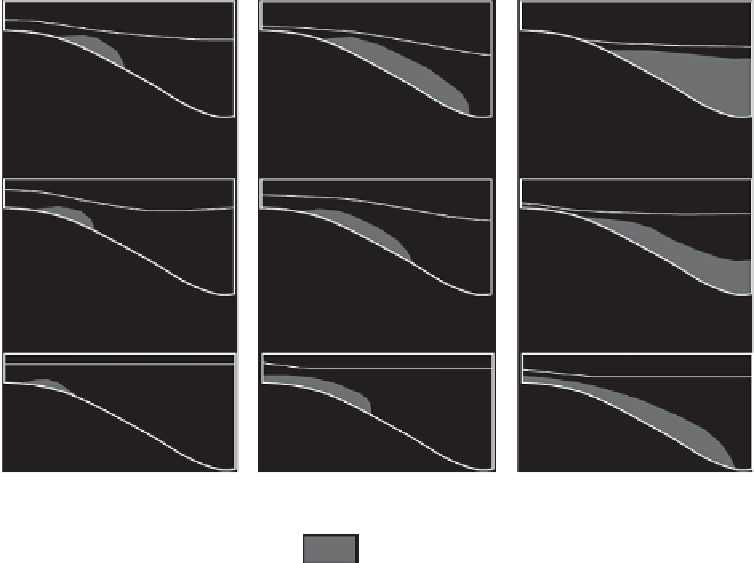Environmental Engineering Reference
In-Depth Information
(a) High flow
Epilimnion
Hypolimnion
(b) Average flow
(c) Low flow
Early summer
Middle summer
Late summer
Explanation
Anoxic zone
FIGURE 14.16
(a-c) Generalized longitudinal distribution in hypoxia. (From De Lanois, J.L. and Green,
W.R., Hypolimnetic dissolved-oxygen dynamics within selected White River reservoirs, northern Arkansas-
southern Missouri, 1974-2008, U.S. Geological Survey, Reston, VA, 2011; After Cole, T.M. and Hannan,
H.H.,
Reservoir Limnology—Ecological Perspectives
, Wiley, New York, 1990.)
while much of the upper reservoir consisted of “young” water. Figure 14.19a also demonstrates a
peak chlorophyll-a concentration located midway down the reservoir, illustrating the impact of a
local discharge. Even given the impact of the high-low event, beyond the riverine zone the hypo-
limnion of the reservoir is anoxic for this date and much of the year.
For Lake Allatoona, the residence time, as indicated by water age, is greater than it is for Lake
Walter F. Georgia and the horizontal gradients are less, but with the highest productivity in the
upper zone of the reservoir. For this date, most of the reservoir below the relatively shallow hypo-
limnion is anoxic (Figure 14.21).
14.5 NITROGEN
14.5.1 S
ourceS
and
S
InkS
of
n
ItroGen
Nitrogen is important for lakes and reservoirs for a number of reasons, not the least of which is that
it is an essential nutrient and an indicator of pollution (e.g., eutrophication).
Nitrogen can exist in a number of oxidation states, as shown in Table 14.4, all of which are of
environmental importance. The processes impacting nitrogen are illustrated in Figure 14.22.
14.5.1.1 Atmospheric Sources/Sinks
Nitrogen in the atmosphere typically occurs as molecular nitrogen (N
2
), or in dissolved or par-
ticulate forms. The molecular form makes up approximately 78% of our atmosphere (Table 14.1).
Other forms in the atmosphere include trace amounts of nitrogen oxides, nitric acid vapor, gaseous

Search WWH ::

Custom Search